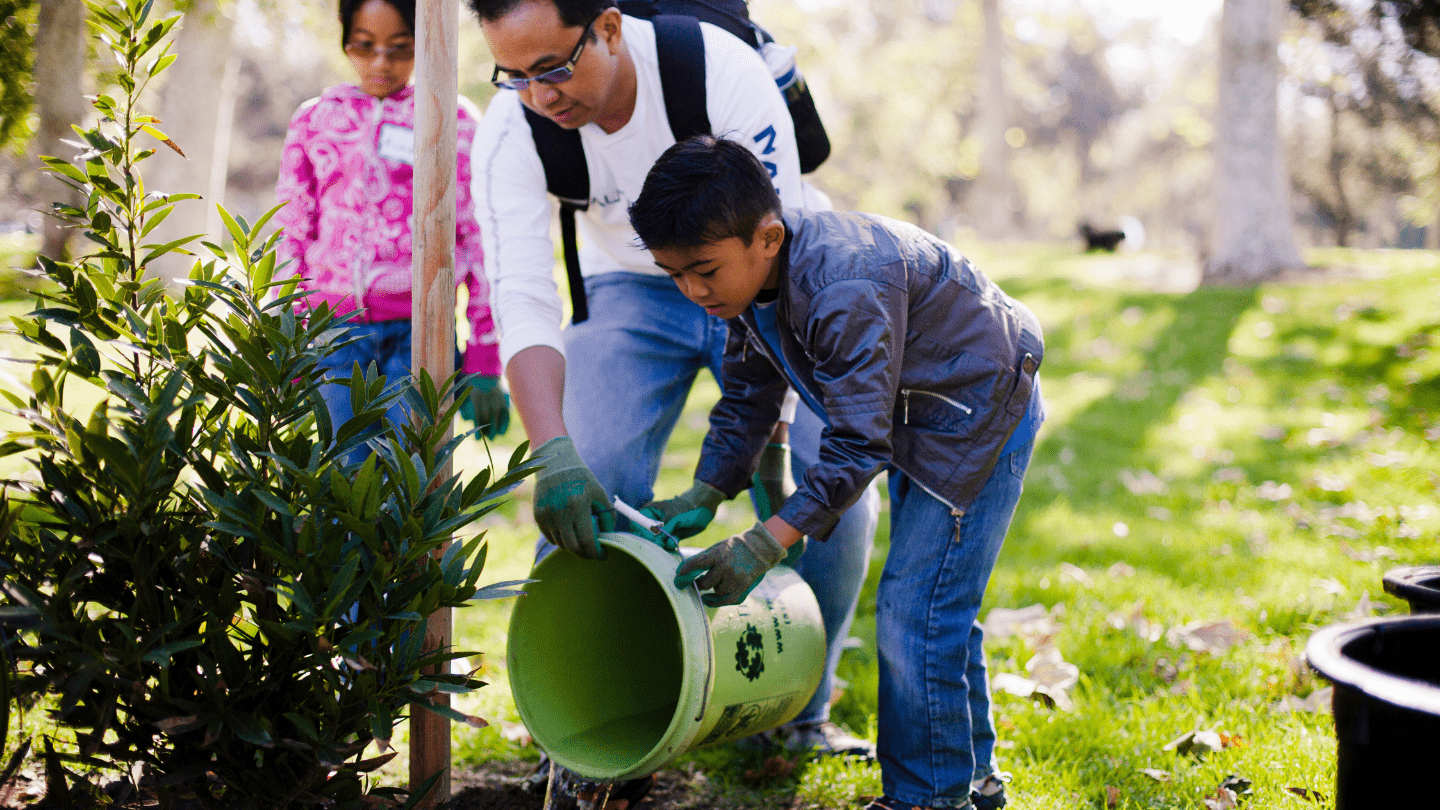Here at TreePeople, we do a LOT of planting—in 2024 alone, we put more than 11,000 new trees in the ground! Expanding our urban canopy is critical to building climate resilience. But something that’s just as important is continuing to care for the canopy we have—especially the older, mature trees that make our neighborhoods shady, healthy, and beautiful.
Canopy loss is happening at a rapid rate here in Southern California. In LA, researchers estimate that many neighborhoods have lost between 10 and 50 percent of their street trees in the past two decades. This is because factors like climate change, poor tree care, and sub-par urban growing conditions make life really difficult for trees in the big city. But there’s good news—you can help! From watering to weeding, there are a lot of different ways that you can care for the street trees in your neighborhood. Here are a few to consider:
1. Watering
Watering is great for most of the tree species found around LA, especially in the summer. If there hasn’t been recent rainfall, we recommend watering once every one to two weeks, particularly during heat waves. Because urban soils are typically very compact, water takes more time to penetrate and percolate, so water for a longer period of time at a lower rate of flow, and avoid pooling. Slower, deeper watering promotes deeper root growth which helps with drought resilience and stability. If sprinklers are being used, ensure they are adjusted so that tree trunks are not being directly hit by water, which can cause issues over time.
AND PLEASE NOTE: evergreen or “live” oaks, as well as other desert-adapted trees like desert willow, may actually develop issues as a result of summer watering! So please avoid it.
2. Weeding
Weeding around trees can help prevent nutrients and resources from being diverted from the tree. Use a small hand shovel or hori hori knife if you have it, though care should be taken to avoid wounding larger roots. Removal of turfgrass around trees is particularly beneficial—the wider the circumference the better!
3. Mulching
If you do weed around a tree, it’s a great idea to replace that ground cover with a good, porous mulch, which can help retain moisture, suppress further weed growth, and reduce the need for mowing and string trimming that can harm sensitive tissues.
Generally, coarser, undyed mulch is preferred. If the soil is highly compressed, break up the surface using a metal rake or shovel, and place a 3-4 in layer of mulch extending close to but not in contact with the trunk, avoiding the common practice of piling it up at the base of the tree. Instead, spread it outwards in a three foot radius around the trunk, ideally to the perimeter of the canopy if possible.
Pro tip: In the city of LA, you can get mulch for free from LA Sanitation!
LEAVE PRUNING TO THE PROS!
While there are a lot of ways you CAN help out your local street trees, you should NOT attempt to prune them unless you are a tree care specialist! Pruning should always be done by someone trained in pruning best practices, as it is very easy to greatly reduce a tree’s value and longevity with improper pruning, despite good intentions. Pruning should always be rooted in a sound understanding of tree biology, with a clear objective in mind each time a cut is made to the tree.

